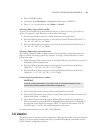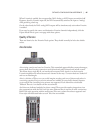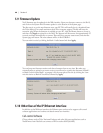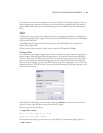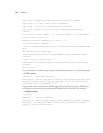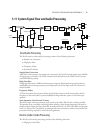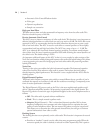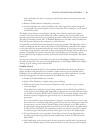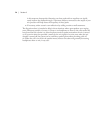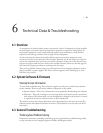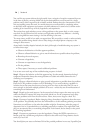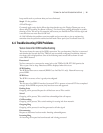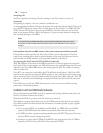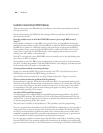DETAILED CONFIGURATION & REFERENCE | 73
larly useful when the caller is carrying on and the talent wants to interrupt to move the
show along.
Reduces feedback when a loudspeaker is necessary.
♦
In the loudspeaker case, reduces audibility of the caller signal that couples through the ♦
acoustic path, into the microphones, and is returned the caller resulting in a more natural
sound for the caller.
e duplex system inserts a controlled loss (ducking) into whichever audio path (send or
receive) is not active at the moment. When the caller is speaking, this loss is inserted in the
announcer path, when the announcer is speaking the loss is inserted in the caller gain is reduced.
e effect is somewhat “seesaw-like”. If Feedback Reduction in the Audio menu is enabled, the
Nx12 will increase ducking in the announcer-to-caller direction.
As a guideline, you will need more ducking when using open speakers. is helps reduce the oc-
currence of feedback and, also reduces the chances of the caller hearing himself via the speaker
to mic path, which has an unnatural quality and can be disturbing. In a morning zoo type of
scenario the setting should be even lower as there will typically be multiple mics used with open
speakers. Fortunately, this scenario coincides with a more duplex style of operating – where
pre-recorded ‘bits’ may be played to callers and must be heard without interruption. e default
setting is 7.
You may choose how much of this effect you prefer, from Half Duplex (16dB) which makes
the Nx12 operate like a one-way-at-a-time speakerphone, to Full Duplex (0dB) which disables
ducking. A good starting value would be 6dB.
Feedback Control
We’ve carefully designed the Nx12 so that problems with feedback should be rare. However,
despite excellent trans-hybrid loss and a number of other features, you can probably induce
feedback if you try sufficiently hard, such as by cranking up your studio monitors to very loud
levels. Some suggestions for what you should do if feedback does occur follow:
Enable the Feedback Reduction function.
♦
Adjust Caller Ducking to a higher setting (more ducking). ♦
When mic processing is used, connect the hybrid in such a way that it gets an unpro- ♦
cessed mic signal.
e problem here is that the mic processing combines with the Nx12’s internal AGC to
increase gain in the feedback path. Depending on the processor used, the feedback margin
can be reduced by many dB. e Nx12’s internal AGC has a internal adaptive smart-gate
function to prevent inappropriate gain increase, but it is thwarted by this additional
processing.
If it is not possible to get an unprocessed mic signal, try to set the processor in such a way
that room noise is not “sucked-up” during pauses. You can also try reducing the output the
mic processor or set the Nom In (Nominal Input Level) selection in the Audio menu to
the next higher setting, thereby reducing levels into the unit. e level to the caller should
be OK since the Send AGC will compensate, however you will force that AGC towards
its maximum gain, and thereby reduce how much gain it can add to the feedback path.
Try repositioning the mics or speakers. It also helps, of course, to use directional mics.
♦
Customers have reported good results with cardioid mics such the EV RE-20 and the
Shure SM-7.
Add equalization to the monitor path. Acoustic resonances usually result in pronounced
♦
peaks in the feedback response. Since there are likely to be only a few pronounced peaks



